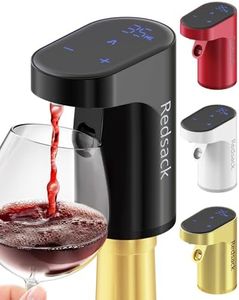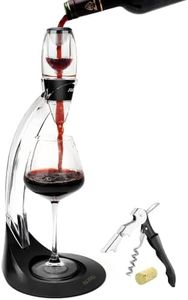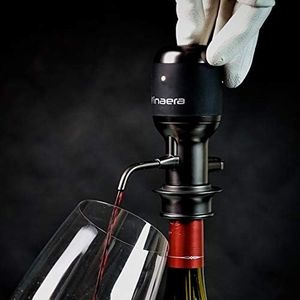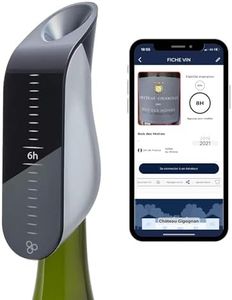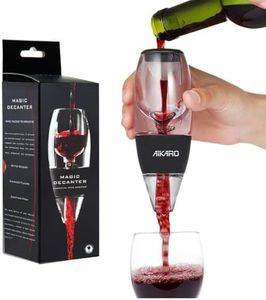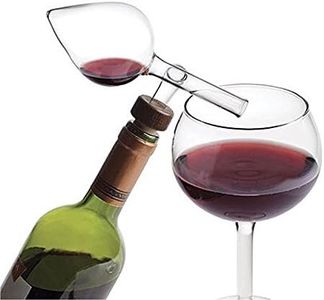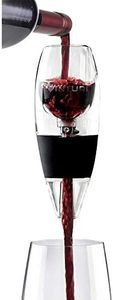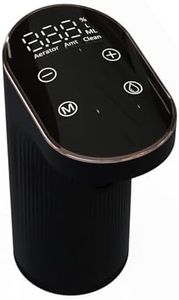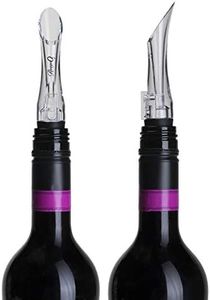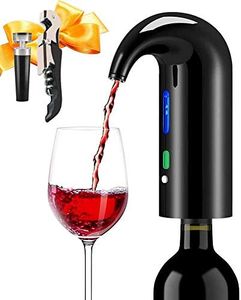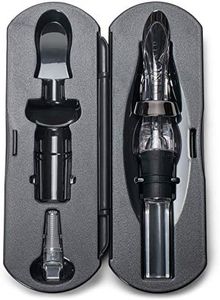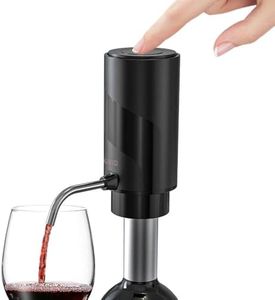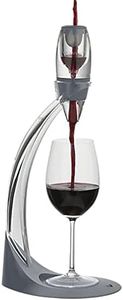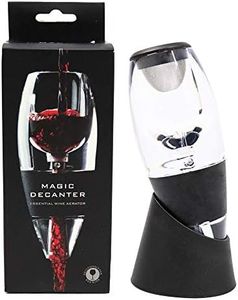We Use CookiesWe use cookies to enhance the security, performance,
functionality and for analytical and promotional activities. By continuing to browse this site you
are agreeing to our privacy policy
10 Best Wine Aerator
From leading brands and best sellers available on the web.Buying Guide for the Best Wine Aerator
Choosing a wine aerator can make a big difference in your wine-drinking experience, especially if you enjoy red wines or full-bodied whites. An aerator's main job is to help your wine 'breathe,' letting it open up, soften tannins, and bring out more flavor and aroma. With many styles and features available, knowing how to select one that matches your typical wine choices and drinking habits can help you enjoy every glass even more.Type (Handheld vs. In-bottle)The type of wine aerator you choose can impact both the process and ease of serving wine. Handheld aerators are devices you hold over your glass or decanter, pouring wine through them to aerate as you serve. They tend to give a strong aeration effect and are easy to use for single servings, but require a steady hand. In-bottle aerators attach directly to the bottle and let you pour wine as usual, conveniently aerating as it flows out. They're less messy and good for casual settings. If you mostly pour a glass at a time or host guests, a handheld might be practical, while in-bottle types work well for relaxed, everyday use.
Level of Aeration ControlSome aerators are designed with adjustable settings or special features that let you control the level of aeration, while others provide a fixed amount. Adjustable models allow you to tailor the experience depending on the type or age of the wine and your personal preference. Fixed aeration models are straightforward but lack customization. If you drink a variety of wines or want to experiment with varying tastes, choosing an aerator with control features can be helpful. However, if simplicity and convenience are your goals, a no-fuss, fixed aerator will suffice.
Ease of CleaningWine can stain and residue can build up, so it's important your aerator is easy to clean to avoid affecting the taste of your wine over time. Some models are dishwasher safe or have simple parts that rinse clean, while others require more delicate hand washing. If you prefer low-maintenance solutions, look for an aerator that is marketed as easy to clean or dishwasher safe. If you don't mind a bit of extra care for a more specialized tool, a more complex design could be suitable.
MaterialAerators come in materials like plastic, stainless steel, and glass. Plastic options are lightweight, affordable, and less likely to break, but might not last as long or feel as elegant. Stainless steel and glass versions usually feel higher quality and look stylish, but they can be heavier or more fragile. If durability and ease of handling matter to you, look for sturdy plastic or stainless steel. For special occasions or a touch of luxury, glass might be your choice.
Compatibility with Bottle TypesNot all aerators fit every bottle; bottle neck sizes can vary, especially with sparkling, dessert, or imported wines. Some aerators are designed for universal fit, while others may only work with standard wine bottles. If you often try wines from different regions or bottle shapes, choose a model with a broad or flexible fit to avoid frustration.
Portability and StorageDepending on your space and lifestyle, you might care about how easy it is to store or take your aerator with you. Compact, travel-friendly models are great if you take wine to gatherings or like something that fits in a drawer. Larger or more decorative aerators might be best for a home bar or display. Think about where and how you'll use your aerator to pick the right size and storage style.
